The Oceanus line is positioned as Casio’s elite which feature cutting edge technology fitted inside titanium cases of superior construction and finishing. For many years I have looked with wonder at the various Oceanus models with their high price tags and had been skeptical of the quality. How could Casio possibly put something out that could challenge the Citizen Attesa and Seiko Brightz lines? Well, I can say that after a friend loaned me his OCW-600 I was pleasantly surprised.
The OCW-600 is a member the international line of Oceanus and has been on the market for many years. The Oceanus line is constantly evolving with the most recent models limited to the Japan market only so although the OCW-600 provides a good taste of the line, it is by no means representative of what the most current models are capable of.
OK so on to business. The OCW-600 is cased in titanium with a titanium solid link bracelet. Neither is coated so the metal (particularly the brushed areas) develop a gray patina. If you read enough of the watch forums you will find that titanium is notorious for being more sensitive to scratches, however, the used model I spent some time with did not seem any worse for wear than a stainless steel model. Casio’s finishing of the titanium was surprisingly well executed. Titanium can’t be the easiest metal to finish and Casio does not have a legacy of metal working, but judging from this one example, you would never know it. The edges of the case and bracelet are polished with the top surfaces brushed. The case has four buttons with a good solid feel and one of the buttons is even engraved with the Oceanus symbol. The mid line of the case features the little extensions which are characteristic of many G-Shocks which is a nice touch. Unlike the more recent models, this model does not have a crown.
The bracelet is an H link style. The top surface of the bracelet is nearly all brushed except for the edges of the square portion connecting each H link. The edge part of this link is not only polished but also beveled which adds some extra dimension to the bracelet. The end links are solid and massive and function to extend the length of the case. The clasp features a forged hinge and the case back is screw on with an Oceanus specific engraving.
The dial has some nice surprises too. Designed with the classic three register face, the dial provides a feeling of sport and sophistication. The dial on this model is a dark smokey gray with some very subtle starburst texture. Being a solar charged quartz I did not see any solar panel underneath. The major index markers are three dimensional and adequately finished. I would not put them in the upper crust of others that I have seen, however, they are the best that I have ever seen in a Casio. Hands are pretty nice too. Elegant sword style shape with lume filling the interior. The hands on this model contained a white line down the middle which was also the bevel and I felt this detracted from the general quality of the hands. I felt the line was too thick and disrupted the normal appearance of the bevel. Being read against a dark background, the white line is not really necessary for visibility anyway. Lume on the hands and markers matched and the intensity was better than the few other Casios I have seen with lume, however it is still not very bright nor long lasting.
Generally I prefer a clean dial, but I did not find the subdials of the OCW-600 cluttered. The subdials are white with a radial pattern and the hands (along with the Oceanus symbol) all have a nice blue (maybe blued) finish and look very nice against the dial. The center post indicator hand also has a blue finish on the bottom end with white in the pointy end. The 9 oclock subdial is a simple 24 hour indicator. The 6 oclock subdial is used for time keeping seconds and is also the 1/20 second indicator for chronograph mode.
It is the function of the 3 oclock subdial which separates this Oceanus from other Casio multi-function analogs. This subdial actually has two hands which are used to display the world time and alarm setting which is VERY nice because you can still keep the current time on the center post and the little subdial hands can move around a lot faster. Although the OCW-600 loses the display of day of the week and mode, this is a small price to pay to actually be able to use the WT and alarm. The 3 oclock subdial is also used to count minutes for the chronograph function.
The center post second hand is used primarily as an indicator hand, like the other Casio multi-function analogs, but it also is used as the second counter for the chronograph. The chapter ring is layered with both minute/second indices and the city ring. The chapter ring is wide and shallow and results in a nice proportion between the size of the dial to the size of the crystal and does not have the characteristic G-Shock deep bezel.
The OCW-600 is radio controlled and although it did sync most of the time, it did miss a couple of nights where the other atomic G Shocks right next to it did sync.
I think that just about covers it. I have to say I like this Oceanus a lot. I still don’t know if the current Japan only models are worth their $1,000 price tags. I suppose a lot of that cost comes from the use of the titanium and I am just not one to put much value in titanium. For some reason I don’t think Casio cares much what some guy with a free blog or anyone else for that matter thinks about their elite line. Sometimes I think Casio makes the Oceanus just because they can. The gross profits on the G-Shocks and other Casios must be enormous that there is no requirement to sell the Oceanus. The Oceanus seems like a think tank. It reminds me of some of these companies which allow their scientists and engineers a small percentage of their work time to freely create and the next thing you know you get the Post-It note. It is interesting to see the most cutting edge technologies and modules start their lives in the Oceanus and then gradually filter down to the other lines.
Nuts and Bolts
Module 4330
Crystal diamerer 34mm
Case diameter 43.5mm
Lug to Lug 46mm
Thickness 12mm
Width at clasp 18mm


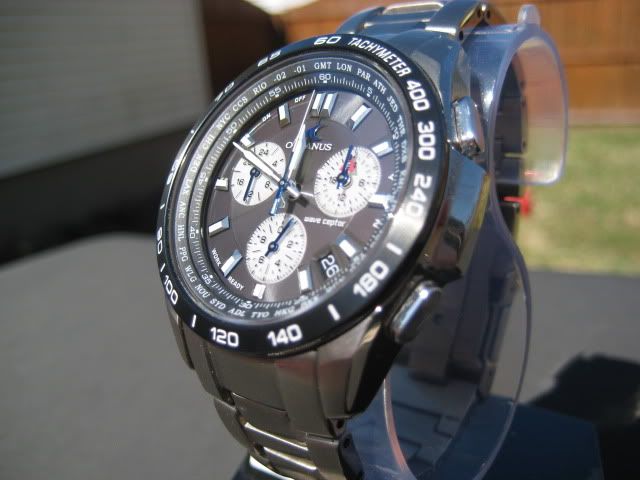
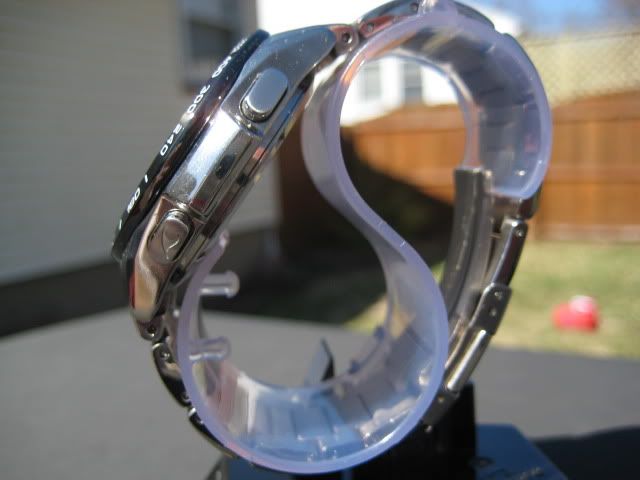
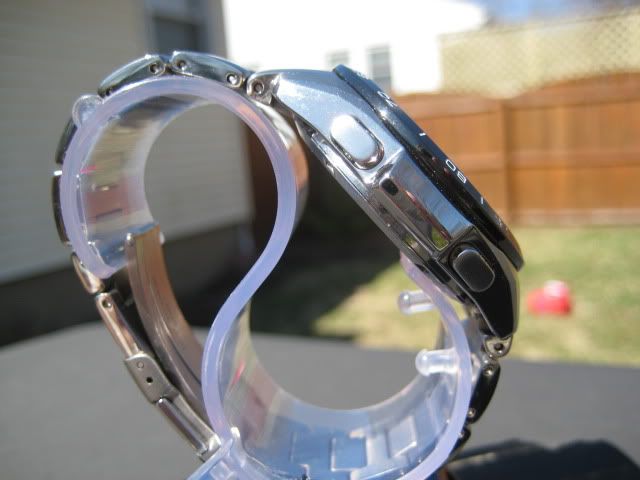
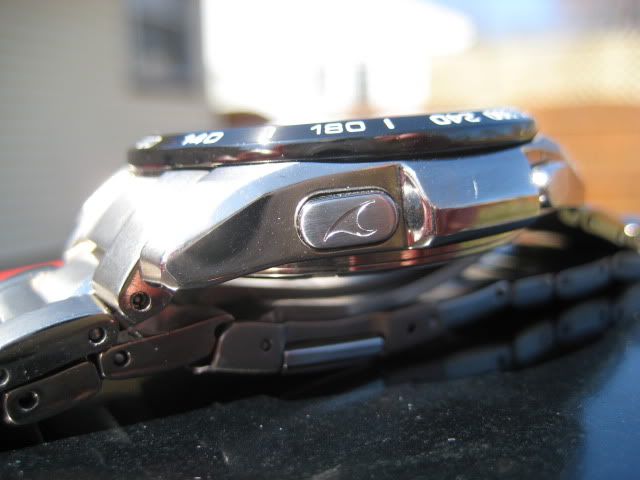


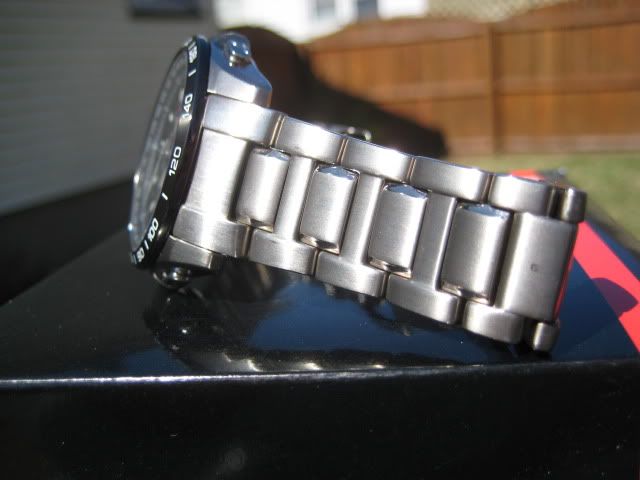
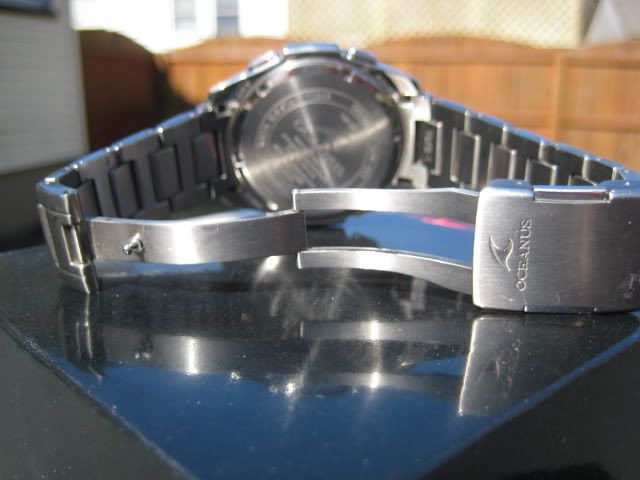
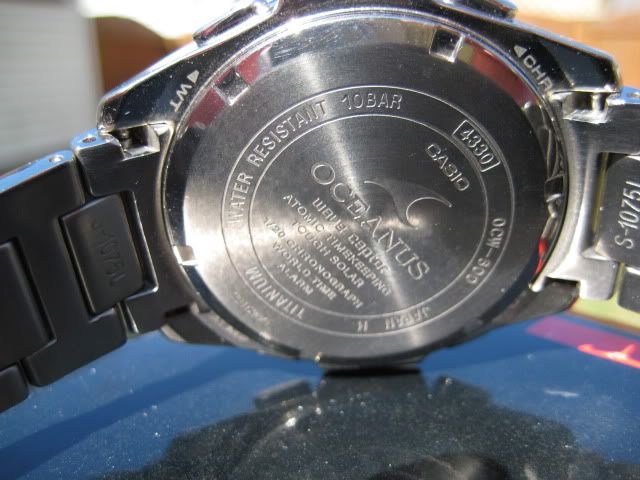
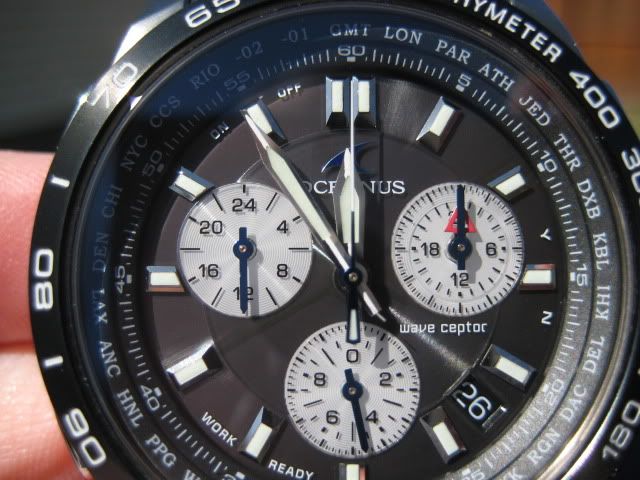
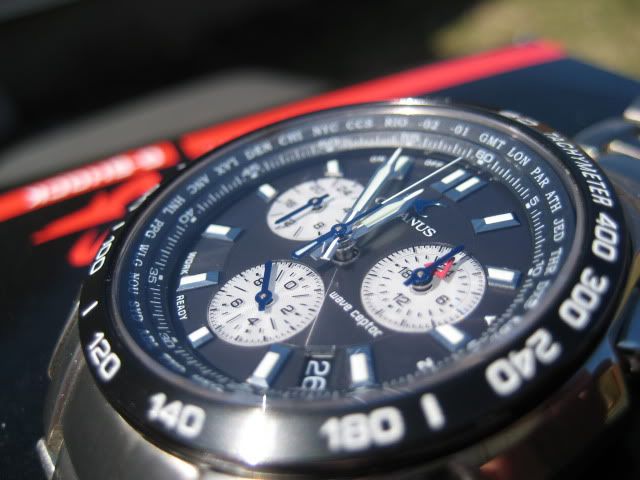
1 comment:
nice review Spin Doctor
Post a Comment